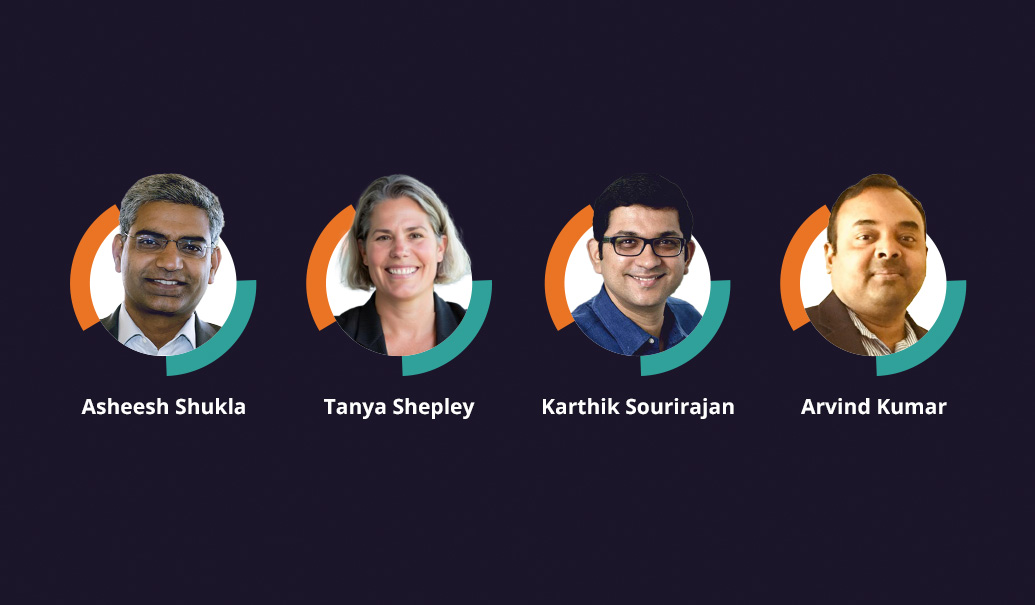The benefits of customer centricity are readily apparent: When you understand how your customer engages with your company or offerings, you can improve their experience, better target your marketing messages and increase sales. However, the best approach to becoming customer-centric isn’t as easily defined. It requires developing capabilities across a number of areas: data capture, analytics, reporting, strategic promotion planning and campaign deployment, among others. And most of all, it requires a well-thought-out change management strategy.
Having successfully transitioned its oncology space to a customer-centric model, Merck knows the way forward. We recently spoke with Deborah Cava, director of oncology multichannel integration at Merck, and Pete Mehr, a principal at ZS who partnered with the Merck team on the customer-centric transformation, to learn what it takes to get up and running, how to get colleagues on board, and what’s next for customer centricity.
Q: It seems like every pharmaceutical company is striving to be more customer-centric. Where are you on that journey, and where have you gotten the most traction?
Deborah Cava: I’d say [that we’ve gained the most traction] in achieving that integrated, holistic view of how the customer engages. Relatively speaking, that’s where we’ve gone the farthest. And yes, this has been a popular topic in the conferences I’ve attended over the past five or 10 years. People have been talking about a 360-degree customer view: “How do I see the ways in which the customer is engaging?” It’s been aspirational for companies, and I feel like Merck has really made a lot of headway there.
Pete Mehr: I agree. There are a lot of pharma companies that have customer 360s or are just beginning to put them together, but there’s only a handful that are using the data they’ve been collecting to design and deploy a tailored customer experience. Merck is ahead of the curve because they have the data and they’re using it.
Q: Now that you have this integrated, holistic view of the customer, how are you using these insights to go to market differently?
DC: I would say our analytics, segmentation and optimization of investments have really changed. We’re doing more analysis to drive our investment decisions.
PM: Another area that Debbie’s team has focused on is integrating behavioral data—customer engagement data, sales data—with customer awareness data from market research studies. This linkage enables Merck to see how engagement and awareness of key messages are linked, and how they both drive sales. I haven’t seen other companies doing that.
DC: That’s right. Now that we have insights into how customers engage, we’re able to leverage that information and begin to bridge that with other business insights, whether it’s levels of awareness or financial impact … and there are probably more ways we can use this data that we’ll continue to uncover. Using that engagement data, you might begin to say: “Here’s the behavioral reaction from the customer as it relates to awareness. Here’s the action or reaction of the customer as it relates to impact to revenue or increased sales.” I think having that engagement data was probably the best investment we’ve made in a long time because it foundationally enables so many more business insights.
Q: If you could name three key factors driving your program’s success, what would they be?
DC: I’d say the biggest thing was having an executive sponsor, and I can’t emphasize this enough: We’re not just talking about an executive sponsor on paper. We had someone who was really committed, showed up at the meetings, bought into the vision, understood it, and was prepared to back us and support us. That’s one. I think another key would be having a team that has an analytics mindset because out of the gate, it’s a lot of data sharing. Ultimately, we were able to translate everything into empirical answers so people could see, objectively, what we’re doing and how we’re helping the business in quantifiable ways versus a lot of guesswork or past experience. We were able to articulate the value of what we were doing based on data because of that data-driven mindset, so I’d say that’s two. And three was probably having the right tools, the right technology for the job.
Q: What surprised you during the implementation of this approach?
DC: That people weren’t jumping up and down and saying: “Thank you. Oh, my gosh! These are the best suggestions we’ve ever seen!” [Laughter.]
PM: Although some people did. The execs did. But I agree. For many, it was a harder sell.
Q: Why is that?
DC: You have to keep in mind that when you do this, you’re disrupting the way business has been done in people’s areas.
PM: That’s exactly right.
DC: Again, this is why the data is so powerful and important. It’s also why an executive sponsor is so important. But you always have to remember: In essence, you’re suggesting to people how their work could contribute to the business even more significantly, but it’s going to involve new ways of working and some new choices. That’s a big responsibility that needs to be dealt with very delicately. It’s not just like: “Here’s the data. Consume it. Use it. Love it.” No one should underestimate the change management required.
PM: There’s an emotional side to this kind of change. When you’re in a position to provide feedback on others and the work they’ve been doing, you have to take their emotions into account when you’re providing that message because the data is clear. It’s telling us one thing and it often means your colleagues have to change what they’re doing. That’s why it’s so important to make sure the data is being interpreted correctly.
“Having that engagement data was probably the best investment we’ve made in a long time. … It foundationally enables so many more business insights.”
DEBORAH CAVA
Q: What organizational changes needed to be made to help develop and adopt a customer-centric approach?
DC: Our leadership said they want to take how we go to market to another level. I hired what I call a customer engagement manager. Since then, we’ve added to the team, including an individual who specializes in analytics and capabilities.
We did have new types of roles come into the company. They spend their time and energy data mining and understanding the implications and insights.
You definitely want people who are dedicated solely to customer centricity. There are many arms, from analytics to planning to expectations to operational execution. You need people who will live, breathe and ‘work’ the data. You also need people who can work with the stakeholders to apply the insights around how they go to market. There are vast numbers of stakeholders across our organization (way beyond our marketing team) that are affected in order to go to market differently and that’s a large, ongoing process. My team is not a big team, but we’re the ones thinking about how we can adeptly apply learnings for our stakeholders. We have those insights, but we also come with specific recommendations to each group affected.
Q: What results have you seen from adopting a customer-centric approach?
DC: We’re seeing definite increases in our ability to engage customers across our channels, and we’ve also seen some pretty significant lift in terms of alternative channels being able to contribute to our top-line revenue.
PM: Merck is seeing impact in engagement and sales, and that’s the goal.
DC: Yes, and I’d say the best measure of our success is seeing people reach out to my team proactively. People are expecting to see engagement data. It’s not about me pushing it anymore. It’s about them expecting it.
Q: You’ve put emphasis on advice that you might give someone who was considering this approach. Do you have any advice you might give someone who is considering this shift?
DC: It’s going to sound like ‘motherhood and apple pie’ because it’s such a generic answer, and yet it’s so true: You need the vision and you need to execute it. I’m sure many companies are just sitting on piles of data and capabilities, but the vision and plan around what can be done with that [data] is key. That’s where we used to be. You have to find that vision and build a road map for how exactly you’re going to achieve that vision and add value to the business.
PM: And here’s another cliché: There’s no magic bullet. … I break every problem down into three things. People need to know what they want to do, how they want to do it, and then they need to be willing to do it. It’s easy to fall down on any of those three areas, and Debbie has been successful at Merck because she’s gotten these things right.
DC: Yeah, people always have a lot of ideas. We define technologies and things like that, but then when push comes to shove, somebody’s got to do the new work. People want to think some new technology will help do it all for them, but that’s not the case. I like what Pete said about knowing what you want to do. I’ve seen slides going around for years about what people want to do and then defining that. That’s the easy part. Figuring out how you’re going to do it and then actually doing ... [is] always the hard part.
Q: How do you think customer-centric marketing will evolve at Merck?
DC: We still have a lot of work to do on the change management front. I want customer centricity to become part of Merck’s DNA. I want it to run so deep that we can’t imagine doing business without it. It’s a breadth vs. depth thing, and I want depth first.
PM: You make a great point. I would love to see the day where a brand team says: “Hey, I want to start a new program. What customer preference data do I have to look at to help inform that?” And that’s their first thought.
Q: How do you see customer-centric marketing evolving across the industry?
PM: Right now we’re seeing companies put the capabilities in place to enable customer-centric marketing, whether they’re gathering data, building their database, putting technology in place and working on processes to accommodate a new approach, or engaging more with their analytics teams to use data to provide insights on how they go to market. … They’re all investing in different parts of this, and they’re all at different phases, so the potential for us to go to market in a data-driven way is becoming viable.
Soon, we could be looking at integrated sales and marketing, driving investment decisions and changes to how sales interacts with customers based on how the customers have engaged in the past. There are vast opportunities to leverage predictive analytics, but we’ll only see this if companies can overcome those barriers that Debbie was alluding to. They’ve still got to make it happen.














